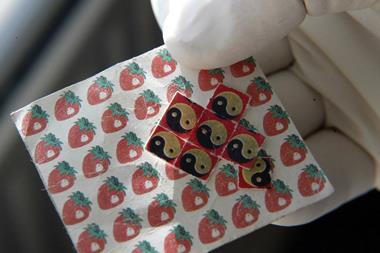A fungal factor may have been the common cause of witch hunts and St Anthony’s fire
The ancient Celtic festival of Samhain, first celebrated in Ireland around 2000 years ago, marked summer’s end and the winter’s beginning, eventually begetting All Hallows’ Eve. This year, Tourism Ireland launched an ad campaign proclaiming the nation as the ‘home of Halloween’. However, a return to the roots of Halloween likely won’t slow the rush to its ‘unofficial hometown’ of Salem, Massachusetts, in the US which saw over one million visitors in October 2023. Modern day Salem’s popularity as a festive fall destination is connected to the notorious witch trials of Salem Village in 1692–1693 – events that saw 200 people accused of practising witchcraft and 20 of them, mostly women, executed.
Salem’s outbreak of accusations began when a small set of children ‘began to behave strangely and eventually accused neighbours of having bewitched them’.1 The circle of accusers expanded, spurring a witch hunt in the New England colony just as three centuries of witch hunting in Europe were sunsetting. Pinpointing a single cause for these events is impossible and numerous contributing factors to Salem’s trials have been identified including long-brewing family and social tensions, religious extremism, legal failings, xenophobia, misogyny, and mass paranoia.
Debate as to the role that Ergotismus convulsivus played in the Salem witch trials has raged on
In April 1976, behavioral psychologist Linnda Caporael wrote an article in Science that suggested a new factor – the fungus Claviceps purpura.2 This ergot fungi infects a variety of grains - with rye being particularly susceptible – and produces an array of pharmacologically active alkaloids.3,4 Toxicosis can result from the consumption of infected grains in two terrifying forms - Ergotismus gangraenosus and Ergotismus convulsivus.5, 6 These forms reflect, in part, the varying chemical actions of ergot alkaloids but they are also dependent upon how ergot alkaloids are ingested. Food preparation methods influence which ergot alkaloids are ingested and in what amounts, resulting in qualitative and quantitative differences in their effects.6
Ergot alkaloids are typically simple amides of d -(+)-lysergic acid or more complicated ergopeptides comprised of d -(+)-lysergic acid linked via an amide bond to a short peptide, such as ergotamine.4 Albert Hoffmann’s infamous experiment in combining d -(+)-lysergic acid with different amines is a testament to their potency, resulting in the powerful hallucinogen lysergic acid diethylamide (LSD).
While LSD is not present in the stew of alkaloids C. purpura produces, other of its alkaloids can affect the central nervous system, act upon smooth muscle in a range of organs, or cause general gastrointestinal (GI) upset.7,8 The resulting symptoms – convulsions, muscle spasms, delirium, hallucinations and GI maladies – herald Ergotismus convulsivus. Did this form of ergotism (possibly from tainted local rye) contribute to the strange behaviours of the initial Salem witchcraft accusers, the behaviour of various adults in the community, and the general panic of the witch hunt? Caporael’s exploration of these questions immediately made a splash that included front page coverage in the New York Times.9 Since Caporael’s initial work, debate as to the role, if any, that Ergotismus convulsivus played in the Salem witch trials has raged on.10–12 The debate will continue as definitive answers are beyond reach in part because chemical analysis of relevant materials is an impossibility. As pointed out in a Vox exploration of this debate, ‘we can’t do a forensic examination of a 300-year-old piece of bread’.
The process of tissue death was accompanied by an intense burning pain, likely earning it the name ‘St. Anthony’s fire’
While the role of ergot alkaloids in the witch hunts is contentious, their place among the saints is much clearer. Ergotismus gangraenosus has been referred to as St. Anthony’s Fire for centuries, ever since Pope Bonifacius VIII instituted a monastic order in St Anthony’s name in Vienne, France.1, 3
The monks of this order dedicated themselves to caring for the sick and their monastery became a pilgrimage centre for sufferers of skin disease such as Ergotismus gangraenosus, which plagued the region. Both a blessing and curse, ergotamine is a potent vasoconstrictor that is therapeutically useful in preventing vascular headaches like migraines. When ergotamine is ingested for too long or at too high a dose, blood is cut off to tissues leading to painful dry gangrene with the affected area suffering necrosis.5, 13
This process of tissue death was accompanied by an intense burning pain, likely earning it the name ‘St. Anthony’s fire’. Yet Ergotismus gangraenosus is not the only disease referred to by this name. Depending on the location and time period, two other diseases have resided under the umbrella of St. Anthony’s fire. These include erysipelas, often caused by group A beta-hemolytic streptococci that occurs on the face and legs, along with herpes zoster whose rash typically strikes the chest and lower back first.13
While we are not free from these fires in the modern age, they can be mitigated or eliminated with careful screening, antibiotics, and antivirals. A comforting reality in the face of historical horrors.
References
1. N P Spanos, J. Hist. Behav. Sci., 1983, 19, 358 (DOI: 10.1002/1520-6696(198310)19:4<358::AID-JHBS2300190405>3.0.CO;2-G)
2. L R Caporael, Science, 1976, 192, 21 (DOI: 10.1126/science.769159)
3. M R Lee, J. R. Coll. Physicians Edinb., 2009, 39, 179
4. P L Schiff Jr, Am. J. Pharm. Educ., 2006, 70, 98 (DOI: 10.5688/aj700598)
5. A Grzybowski, K Pawlikowska-Łagód, A Polak, Clin. Dermatol., 2021, 39, 1088 (DOI: 10.1016/j.clindermatol.2021.07.009)
6. M J Eadie, Lancet Neurol., 2003, 2, 429 (DOI: 10.1016/S1474-4422(03)00439-3)
7. I R Innes, Br. J. Pharmacol. Chemother., 1962, 19, 120 (DOI: 10.1111/j.1476-5381.1962.tb01432.x)
8. A J Akinboye, K Kim, S Choi, I Yang, J.-G. Lee, Food Sci. Biotechnol., 2023, 32, 1133 (DOI: 10.1007/s10068-023-01295-0)
9. J N Wilford, Salem Witch Hunts in 1692 Linked to LSD‐Like Agent, The New York Times, 1976
10. N P Spanos and J Gottlieb, Science, 1976, 194, 1390 (DOI: 10.1126/science.795029)
11. M Matossian, Am. Sci., 1982, 70, 355
12. L S Mundra et al., JAMA Dermatol., 2016, 152, 540 (DOI: 10.1001/jamadermatol.2015.4863)
13. G Cervellin, U Longobardi and G Lippi, Acta Biomed., 2020, 92, e2021008 (DOI: 10.23750/abm.v92i1.9015)

















No comments yet